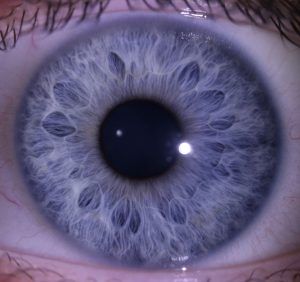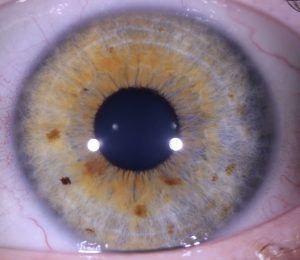What Could Insulin Resistance Look Like In Someone's Eyes?
by Judith Cobb, MH, CI3, NCP, NNCP, CCII3
DISCLAIMER
This article is not meant to diagnose nor prescribe. It is meant for educational purposes only. Judith Cobb, Cobblestone Health, and Nature's Sunshine Products accept no responsibility for results you get, whether good or bad, from using this information. Always seek the guidance of a qualified health professional.
It’s not news anymore – blood sugar disorders, including insulin resistance and type 2 diabetes, have become epidemic in every population insulin resistance that has adopted the Standard American Diet. As recent as this horrendous nutritional status is, iridology research dating back to the early 1800s has been mapping iris indicators of blood sugar risk factors. If you haven’t seen my youtube video Insulin Resistance & Type 2 Diabetes – The Risks Your Body Wants You To Know About, I invite you to click over and watch it; it’s only 7 minutes long. The statistics indicate that many of us, even those of us who think we are safe, may be headed for trouble.
The statistics in Canada and the USA are very similar, and they are not pretty – blood sugar disorders are on the rise at alarming rates. In 2015, 9.3% of the population had diabetes and another 22.1% were insulin resistant (also known as prediabetic). By 2025 – that’s only 7 years from now – the numbers are projected to increase to 12.1% with diabetes and 23.2% as prediabetic.
Harvard University reports that 9 out of every 10 cases of type 2 diabetes could be avoided by making diet and lifestyle changes.
Among those changes – simply walking for 30 minutes per day reduces the risk by 30%. Easy, right? Yet most North Americans won’t make any of the simple changes that could protect their health.
Irides (the colored part of the eyes) teach us about genetic potential. When we see certain markings we know the body has inherited corresponding ‘weak links’ that need protecting and shoring up. The sclerae (whites of the eyes) teach us what is going on now, what the person has earned and what the active or ‘brewing’ problems are.
1) Iris Indicator: Polyglandular
 This is a genetic indicator. It will not change with diet or supplements or cleansing.
This is a genetic indicator. It will not change with diet or supplements or cleansing.
When an iris has many lacunae (leaf or petal shapes) in it, and they are attached to the collarette (called the autonomic nerve wreath by Bernard Jensen), the eye is called polyglandular. It doesn’t matter what color the eye is or what other markings we see. The presence of many lacunae attached to the collarette is all we need. The lacunae all sit in the zone of the iris that holds reflex points for many of the endocrine glands, including the adrenals, parathyroids, pancreas, pituitary, pineal, heart, and thymus. The predominant areas of hormonal imbalance usually have to do with the pancreas, adrenals, and thyroid – all of which have some influence on blood sugar balance.
2) Iris Indicator: Pigment
 Pigment may be genetic/inherited or acquired/earned. Monitoring a client’s eyes annually, most especially with high-quality photographic equipment, is essential for tracking whether pigment is ‘staying put’ or developing. Irides do not give up pigment once is it deposited. Cleansing and supplements will not remove unwanted pigment.
Pigment may be genetic/inherited or acquired/earned. Monitoring a client’s eyes annually, most especially with high-quality photographic equipment, is essential for tracking whether pigment is ‘staying put’ or developing. Irides do not give up pigment once is it deposited. Cleansing and supplements will not remove unwanted pigment.
What, precisely, are we looking for when we talk about pigment? We’re looking for accumulations of dirty orange, rust color, or dark brown pigment. These each speak of a few different potentials, but they all share one in common – the predisposition to pancreatic imbalance and blood sugar instability. Some people may have no extra pigment at all, while others may have a wide variety of extra pigments, including all three of the pigment colors that suggest challenges with pancreas function and blood sugar metabolism.
As with all iris markings, these only suggest potential, they never determine absolutes. A person who has all the markings that could point to blood sugar issues may be able to avoid problems entirely through sound diet hygiene, proper supplementation, supportive lifestyle practices, and maintaining emotional balance. Conversely, the absence of markings that could suggest blood sugar issues would not guarantee protection against the same if the diet, lifestyle, and emotions are faulty. Polyglandular sub-type and specific pigment colors are just two of the possible endocrine blood sugar indicators we can identify.
Watch this video to learn about these two iris signs:
Blood sugar markers webinar:

Copyright © 2018 by Judith Cobb, Cobblestone Health Ltd. All rights reserved. Please respect the time it takes to write and publish articles. If you will link to this article and give proper attribution, you are encouraged to quote sections (though not the entire article).

